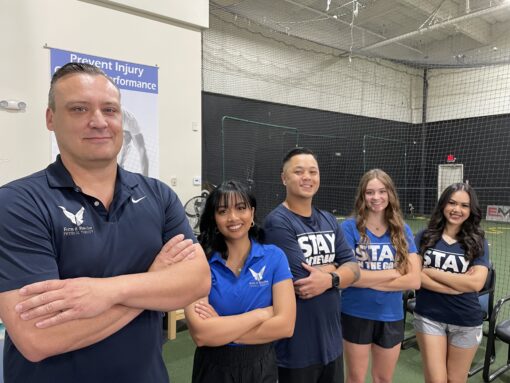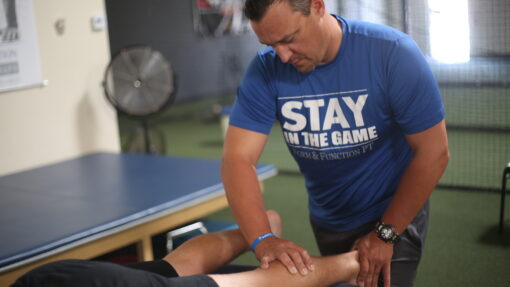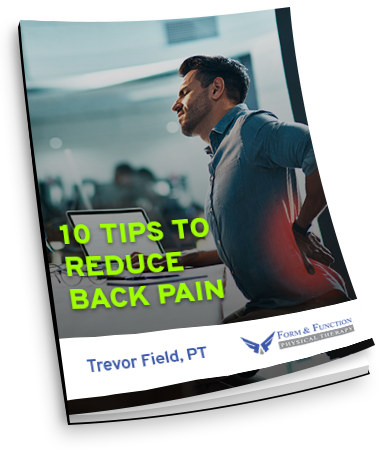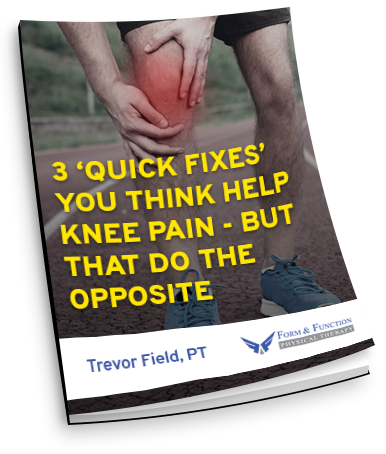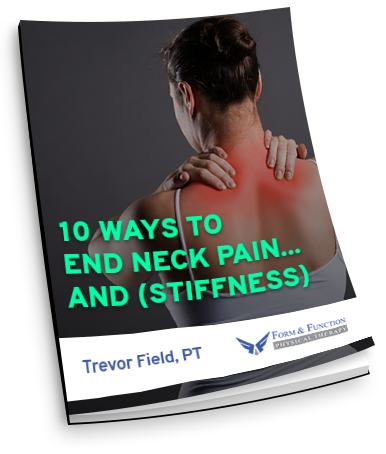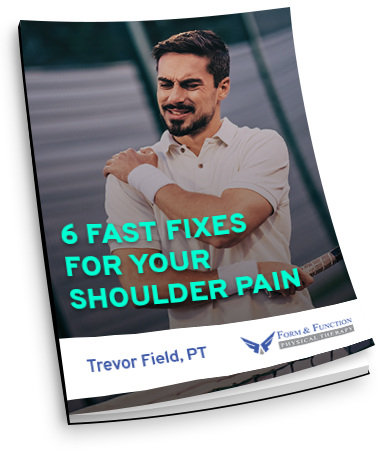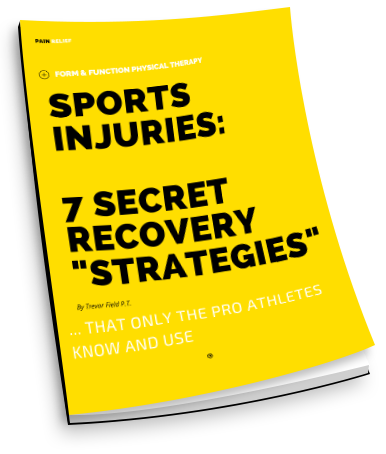Understanding the Spine
Your spine has many nerves that transmit muscle commands and take sensory information to the brain. The spine also has small holes where the nerves exit, and there is one of these on each side at each level. One hole is called a foramen and the plural of that is foramina. The foramen is shaped like a tunnel that the spinal nerve must go through. The disc between the spine bones can bulge and or the spine bones can get arthritis causing the foramen to narrow. Narrowing of a tunnel is called foraminal stenosis, and the nerve can get pinched . This pressure can cause muscle tightness, weakness and/or numbness, tingling and pain in this specific distribution of that nerve.
nerves exit, and there is one of these on each side at each level. One hole is called a foramen and the plural of that is foramina. The foramen is shaped like a tunnel that the spinal nerve must go through. The disc between the spine bones can bulge and or the spine bones can get arthritis causing the foramen to narrow. Narrowing of a tunnel is called foraminal stenosis, and the nerve can get pinched . This pressure can cause muscle tightness, weakness and/or numbness, tingling and pain in this specific distribution of that nerve.
Stenosis can occur at any level of the spine. If there is narrowing in the space of the neck, that may cause symptoms in the thumb or biceps, while narrowing in the lower back can cause symptoms in the big toe or hamstring.
There is also a condition called central canal stenosis that can cause a narrowing of the space of the spinal cord. The spinal cord is a bundle of nerves that comes out of the base of the brain and runs down the center of the spine called the central canal.
Central canal stenosis can be more serious, and compression of the neck can cause significant problems throughout the body including loss of strength in the legs.
The most common area to develop spinal stenosis is the lower back and neck.
@formfunctionpt Spinal stenosis, a narrowing of the spaces in your spine, can compress your spinal cord and nerve roots exiting each vertebrae. Age-related changes in your spine is a common cause. Symptoms include back and/or neck pain, and numbness, tingling, and weakness in your arms and legs. #fyp #physicaltherapy #sportsmedicine #healthandwellness #recovery #spinalstenosis #ranchocucamonga #athlete #sportsphysicaltherapy ♬ original sound – Form & Function PT
The odds of developing spinal stenosis increase with age as the natural space and cushion of the disc begins to diminish as the water content of the disc begins to decrease. This process is called disc dessication, or “drying out”. There are younger people who can develop stenosis, however there is usually a trauma that started the process or, they may have acquired stenosis due to congenital factors (they are born with a narrow spinal canal)
People that have spinal stenosis often complain of pain while walking, standing, or extending or back bending of the lumbar area.
Oftentimes, sitting or flexing(bending forward) may relieve symptoms. The flexed position “opens up” the spinal column, enlarging the spaces between vertebrae at the back of the spine.
Surgery can be performed to increase the foraminal space and give the nerves some room, however there are significant risks involved in spinal surgery. The preferred method is to perform conservative treatment to solve these issues in the hopes of avoiding surgery altogether.
While it is true that stretching and strengthening exercise may not restore space or reverse stenosis, it is also true that not all symptoms people feel that caused them to end up with the diagnosis of stenosis are caused by stenosis itself.
When there is a painful condition, commonly muscles will spasm and tighten, which causes two problems. 1) Tight, tense and contracted muscles have poor blood supply. Think about making a fist on one hand and leave the other hand relaxed. If you look at the knuckles of the flexed hand they are white, meaning there is limited blood flow, oxygen, and nutrition to the tissue. Over time, those tissues ache to bring your conscious attention to the problem (for you to do something about it). 2) These tight muscles cause compression to the structure, which causes a few problems. More compression means less space, which can cause more nerve irritability. More compression can simply cause pain to the local structure like the disc, and the outer 20% of the disc has nerves that send pain signals too.
View this post on Instagram
So what can be done, if not surgery? And…What does successful treatment look like?
The first, and most important step is to get into the hands of someone who understands how to treat these conditions. Basic levels of PT or Chiropractic may give some relief, but they have just as much chance of making things worse. If you are issued exercises that look like they come from a protocol that has been run through a copy machine hundreds of times, you are not likely to get the outcome you are looking for.
Personalized care that assesses your current level and tolerance to exercise, movement, and manual therapy is the most important skill when starting your treatment. Knowing when to do something and more importantly when not to do something is key.
Manual skills to relax tight muscles that cross the joints that are compressed, in conjunction with some type of traction, whether manual or mechanical is almost always indicated. Traction is a form of decompression therapy to give space to compressed nerve roots. We frequently use technology to accelerate healing as well.
Our go to modalites to assist in recovery are cold laser, and pulsed electromagnetic field therapy. Other frequently beneficial treatments for stenosis are massage, cupping therapy and acupuncture.
Generally, there are many mobility exercises that are beneficial, but strength training for the core to support the structure of the spine is commonly overlooked when treating stenosis. Mobility work tends to work better to improve symptoms, but neglecting muscular strength is a recipe to cause progressive worsening of the condition, because muscle is the biggest shock absorber of the joint.
Most people are discharged from treatment far too soon because if treatment was successful at reducing symptoms, people think the lack of pain is the cure to the problem, when there are a few more stones to turn to ensure the symptoms don’t return.
If you are experiencing a lack of progress in physical therapy, don’t get discouraged.
Get a second opinion from another PT office.
Or if you want to read our other blog posts, click HERE to visit the Blog Page.
Finally, if you already feel like you have enough information and you’re ready to get help from providers that take the time and attention you deserve, then click HERE to request a $35 Discovery Visit with one of our expert physical therapists.
And if you are ready to find out a little bit more about us…
Check out our latest Episode of the Stay In The Game Podcast
Powered by RedCircle
If you found this article helpful you might like:
A Physical Therapist’s Guide to Balance Problems5 Benefits of Exercise for Aging Adults

